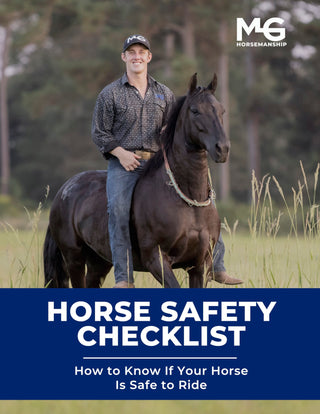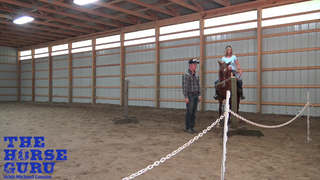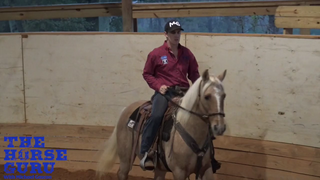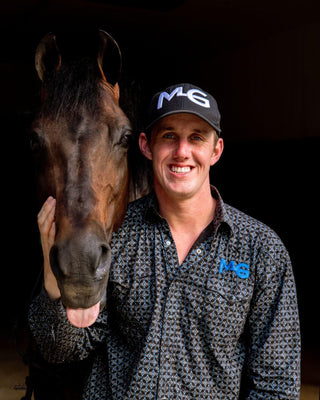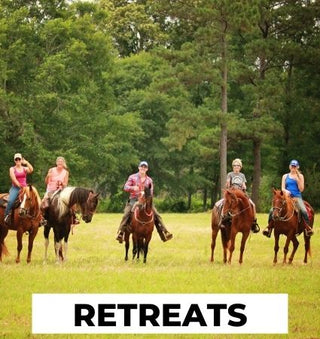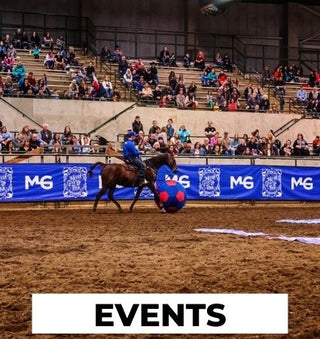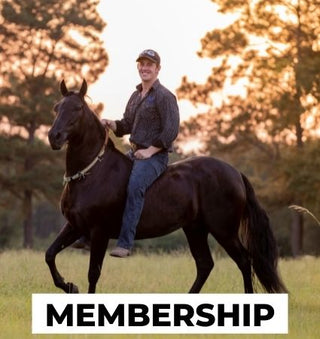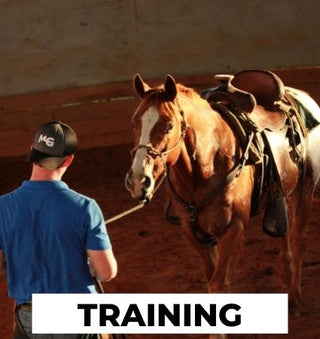Watch the Video Here or continue reading below!
How to Safely and Successfully Introduce Leg Handling to a Young, Sensitive Horse
If you’ve ever worked with a hot, sensitive young horse, you know that picking up their feet for the first time can be a challenge. In today’s post, we’re walking through how professional horse trainer Michael Gascon handles this key step with Jango, a 3-year-old Paso Fino colt who’s just under a week under saddle.
Why Timing Matters: Work Before Leg Work
Use the session to your advantage
When introducing foot handling, timing can make all the difference. Michael chooses to pick up Jango’s feet at the end of a full riding session when the colt is already a little tired and less reactive. After covering groundwork, obstacles, and trail miles, the colt is in a better mental and physical state for a calm desensitizing session.
💡 Pro Tip: Do your leg work after your riding session to take the edge off a sensitive horse.
Step One: Start with Desensitizing
Build trust before asking for movement
Before ever attempting to lift a foot, Michael touches Jango all over with a rope. This desensitizing phase is essential. If the horse is still flinching or moving away from simple touches, it’s too early to pick up a leg.
Use a rope over the back, flanks, and legs until the horse stands still and relaxed. This tells you they’re ready for the next step.
Step Two: Use a Rope, Not Your Hands
Minimize risk and teach without giving a release
Many horse owners make the mistake of grabbing a leg with their hand too early. If the horse pulls away, stomps, or kicks, they’re rewarded with a release—and that’s a lesson you don’t want them to learn.
Instead, use a lead rope around the pastern and gently pick up the leg. If the horse dances or kicks, they don’t get a clear release because the rope still maintains gentle contact.
✅ Keyword Tip: Using a rope to pick up horse feet keeps both you and the horse safer.
Step Three: Keep Control of the Head
A steady head means a safer session
Always maintain enough contact with the lead rope to control the horse’s head. If they try to swing their hind end toward you or bolt forward, you can guide their head to redirect their body away from danger.
This is especially important when working with hot or reactive colts that might overreact to pressure or new sensations.
Step Four: Pick Up, Release, and Repeat
Short, consistent repetitions build understanding
Once your horse is calm with the rope touching their leg, gently lift it above the hock (or fetlock for the front leg), then immediately release and pet them. Repeat this a few times until the horse gets the idea without overreacting.
Michael emphasizes grabbing the tip of the hoof only after the horse has given you the leg willingly. If the horse jerks away, just return to desensitizing. No drama. No correction. Just consistency.
💡 Training Tip: Picking up a colt’s feet is not about force—it's about repetition and release.
Step Five: Practice on All Four Feet
Every leg deserves the same patient approach
Jango is worked on all four legs using the same method. Even when he dances or pulls away, the process doesn’t change: desensitize, lift with the rope, reward the try, and repeat.
You may notice some legs are more sensitive than others. That’s normal. Work each leg individually but consistently to build balanced trust.
What to Expect on Day One
Progress, not perfection
Don’t expect a perfect foot lift from a young, hot horse on the first try. The goal is not to trim or hold the foot for long—it’s to introduce the idea of giving the foot without fear or resistance.
As Michael says, “That right there is a great first day of picking up feet.”
🧠 Mindset Shift: Treat every awkward moment as another opportunity to desensitize, not a failure.
Key Takeaways for Picking Up Feet on a Young Horse
-
Use rope desensitizing before ever attempting to lift a leg.
-
Always maintain head control to manage movement.
-
Never let a kick or pull result in an immediate release.
-
Work all four feet with equal care.
-
Consistency and safety are more important than speed.
Why This Method Works
Safer for you. Better for the horse.
This approach ensures the young horse doesn’t learn bad habits like yanking their feet away or kicking to gain freedom. By using a rope and desensitizing thoroughly, you create a calm, respectful learning experience from the beginning.
Final Thoughts: Build Trust First
By starting slow, staying safe, and using the right tools, picking up feet on a hot colt doesn’t have to be a dangerous or frustrating task. Whether you're prepping for a farrier or just establishing the basics, remember: patience and consistency are your best friends in horsemanship.



